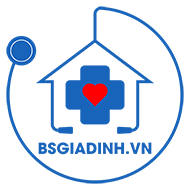The Discipline
Combined internal medicine and pediatrics (usually referred to as Med-Peds) residency programs provide concurrent, dual training in both internal medicine and pediatrics, and allows eligibility for board certification and independent practice in both disciplines.
Combined internal medicine-pediatrics residency programs have existed since 1967,with its origins beginning as early as 1949 in the form of a two-year rotating internship. The specialty was initially established to provide broad-based training in primary care, but programs now offer a curriculum that prepares residents for primary care, hospital medicine, or education in the subspecialties.
Training
Internal medicine physicians, or internists, train three additional years after medical school leading to board certification in internal medicine. Pediatricians train three additional years after medical school to board-certify in pediatrics. Med-peds physicians train for four years and can be “double-boarded” for both these specialties. Since there is frequent crossover of disease and treatment between children and adults, med-peds training consolidates these two specialties into four years. The performance of med-peds physicians on the two national board exams is equal to their one-specialty (specific internist or pediatrician) counterparts.
This leaflet has been produced to give you general information about your treatment. It will help you understand how home intravenous fluids (IVI) works. Most of your questions should be answered by this leaflet. It is not intended to replace the discussion between you and your doctor or nutrition specialist nurse, but may act as a starting point for discussion. If after reading it you have any concerns or require further explanation, please discuss this with a member of the Hospital Nutrition Team caring for you.
What are Home Intravenous Fluids?
If you are already on Intravenous fluids, you will have some idea of what is involved whilst you have been in hospital. Intravenous fluids are a way of replacing your high fluid losses in the body by giving them directly into the bloodstream. The fluids contain water and electrolytes (sometimes called salts). These are given to stop you becoming dehydrated and to make sure they have the right amount of fluid and salts that the body needs.
Read more at: https://bsgiadinh.vn/truyen-nuoc-bien/
Drip bars: IVs on demand
And this brings us to a relatively new trend: the option to receive IV fluids even when it’s not considered medically necessary or specifically recommended by a doctor. In many places throughout the US, you can request IV fluids and you’ll get them. A nurse or physician’s assistant will place an IV catheter in your arm and you’ll receive IV fluids right at home, in your office, or at your hotel room. There’s even a mobile “tour bus” experience that administers the mobile IV hydration service. Some services offering IV hydration include a “special blend of vitamins and electrolytes,” and, depending on a person’s symptoms (and budget), an anti-nausea drug, a pain medication, heartburn remedies, and other medications may be provided as well.
